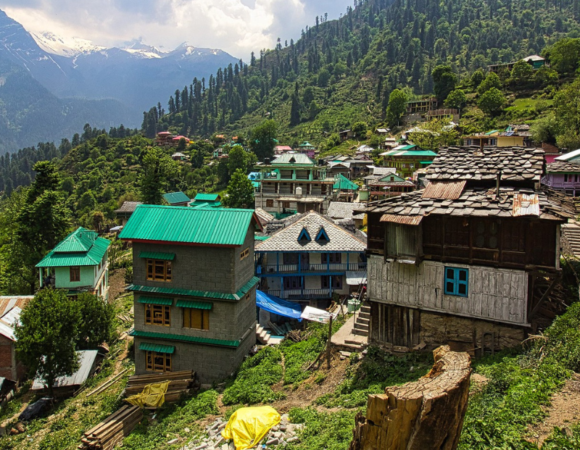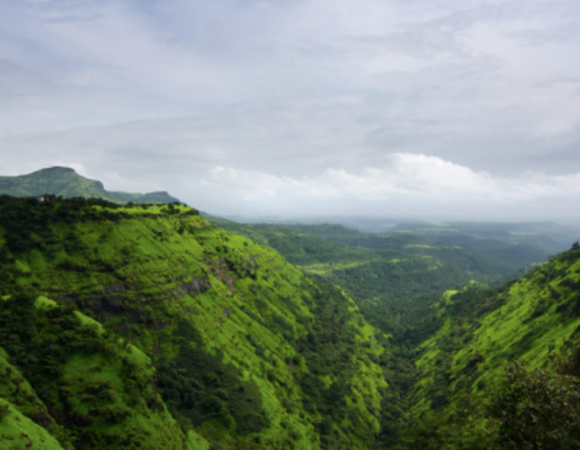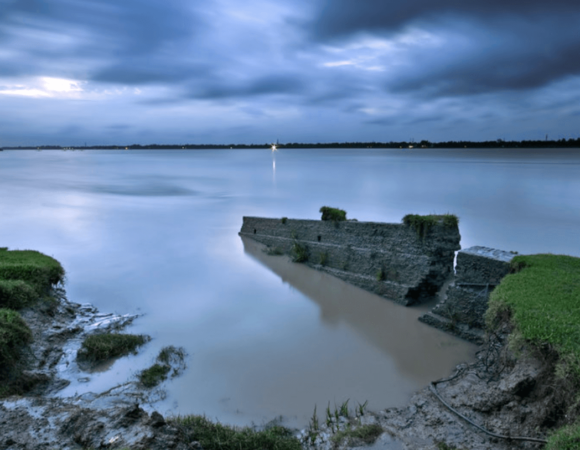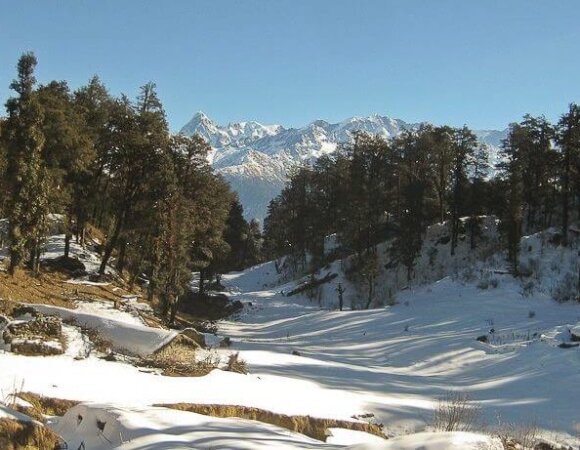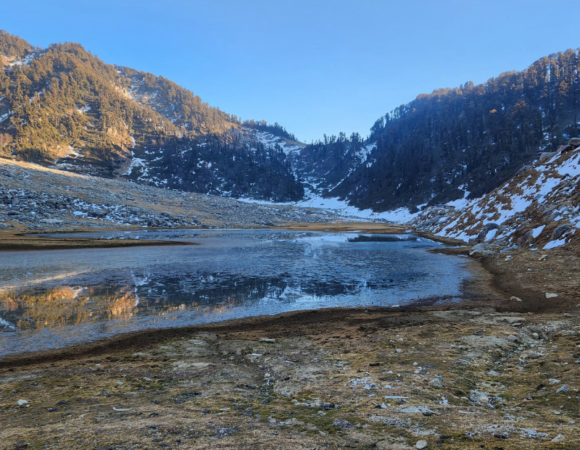Koundinya Wildlife Sanctuary, Best Time To Visit, Things To Do, How To Reach & FAQ’s
Table of Contents
ToggleThe wildlife protection act in 1972 by the Government of India, was enacted for the protection of wildlife in India. Before this act, India had only five national parks. The act essentially protects wild animals, birds, and plants from getting endangered. Subsequently, various biosphere reserves, wildlife sanctuaries, and national parks were set up in India in order to protect the ‘Wild’. Apart from the main objective of protecting wild animals and plants, these initiatives also focused on awareness among the common people of the country. The wildlife sanctuaries, national parks, and biosphere reserves offer an exclusive chance to experience the wildlife in all its glory.
Wildlife sanctuaries provide more free exploration opportunities compared to national parks. As national parks have more strict supervision, as a result, some parts of the national park are not open to the public. The southern part of India is blessed with an extraordinary variety of flora and fauna. The tropical climate and the plateau region make it one of a kind. The respective state governments and central government has done exceptional work to protect the wildlife treasure. However, Andhra Pradesh has only one wildlife sanctuary. The Koundinya wildlife sanctuary deserves more popularity and exploration. This is one of the hidden gems of Andhra Pradesh. It has everything starting from river tributaries, to waterfalls, deep valleys, high hills, slopes, and an exotic range of flora and fauna.
About Koundinya wildlife sanctuary
Koundinya wildlife sanctuary is the only elephant reserve in South India. It is situated in the Chittoor district of Andhra Pradesh and is the sole wildlife sanctuary in the state. It is spread over 88,400 acres of the natural habitat of Asian elephants. Koundinya wildlife sanctuary was set up by the Government of India in 1990. The area is covered with southern tropical dry deciduous forest harboring various species other than Asian Elephants like sloth bear, cheetal, bamboo, Wild boar, Ficus, porcupine, Sambar, Acacia, Albizia amara, Lagerstroemia, etc.

Elephants are not native to the state. The Asian elephant population in the sanctuary migrated into Andhra Pradesh about 200 years ago from neighboring areas. Since then, elephants from the neighboring regions like Tamil Nadu, and Karnataka have been migrating to Koundinya (or Kaundinya) in search of an alternative home. In the last decade, the wildlife sanctuary has welcomed the highest number of migrated elephants. Now, it is home to more than 72 Asian elephants and other exotic species of flora and fauna.
The deep valleys and slopes in the sanctuary are because here the Deccan plateau ends and the plains of Tamil Nadu start. It not only makes the perfect home for a variety of flora and fauna. But, it also makes it picturesque and perfect for a weekend trip. The crystal clear shimmering water of Kaigal and Kaundinya river tributaries adds up to its beauty. The overall tranquility mixed with a little adventure makes it a perfect getaway from our busy lives.
Wildlife at Koundinya wildlife sanctuary
If you are a wildlife photographer or a wildlife enthusiast, then Koundinya wildlife sanctuary is probably the ideal destination for a short weekend trip. The main attraction of the Koundinya wildlife sanctuary is the Asian elephants. But, apart from that, it has a wide variety of flora and fauna. The species residing in this protected area is typical of tropical dry deciduous forest. The land is covered with dry forest, thorny shrubs, small ponds, tanks, rugged high hills, and the Kaundinya and Kaigal river tributaries.

Typical dry deciduous forest species are visible throughout the region, including species of bamboo, Acacia, Albizia amara, and regenerated species of Santalum album (Indian sandalwood). It is also home to the vulnerable yellow-throated bulbul. Predator species like a panther, wild boar, jackal, jungle cat, etc. also reside in the wildlife sanctuary. Small animals like porcupine, sambar, sloth bear are very common here.
Things to do around Koundinya wildlife sanctuary
Jeep safari is the most loved activity in the sanctuary. It takes you through forests and narrow roads where you can spot elephants, cheetah, and even a panther. You can also spot the endangered yellow-throated bulbul here if you are lucky. If jeep safaris sound too basic to you, then you can go on an ‘Elephant safari’.
The wildlife sanctuary arranges various elephant safaris throughout the day for the tourists. You can ride an elephant and take a look around the wild habitat. This is one of a kind exotic experience. Keep your eyes open, for you can spot a panther, or sambar, or yellow-throated bulbul, cheetah, and many other species any time. You can experience the exotic variety of flora typical of dry tropical deciduous forests like acacia, Albizia Amara, and even a sandalwood tree. This will give you a thrilling and the most exciting experience of witnessing the elephants in their very own natural habitat.

But bear in mind that the sanctuary is open from 7 am in the morning to 5 pm in the evening during summers. While during the winter months, the gates might be closed a little earlier than 5 pm.
Other than jeep and elephant safaris, you can visit the gorgeous Golden temple of Sripuram, also the famous Jalakandeswarar temple. These two temples are at a very short distance from the sanctuary so don’t forget to pay a visit to these holy places.
For adventure lovers, don’t miss out on the majestic Antharagange caves. You can hike through the Horsley hills, Swamimalai hills, etc. The scenic beauty and the refreshing weather will take away all your boredom and workload.
Read more: Hill Stations Near Bangalore
Best time to visit Koundinya wildlife sanctuary
The weather in this region is quite pleasant throughout the year. You can commute very easily throughout the year. However, the sanctuary experiences the most number of visitors during the months between October and April. This is mainly because during this time it is easy to spot the animals because during winter the animals come out and roam around the open fields more often. Also, the temperature is low during these months, so the tour around the sanctuary is even more pleasing.
How To Reach Koundinya wildlife sanctuary from major cities?
It is situated in the Chittoor district of Andhra Pradesh. The location of this sanctuary is very well connected to the neighboring major cities. The nearest city to Koundinya wildlife sanctuary is Chittoor. You can take the 70km road trip from Chittoor city to Koundinya wildlife sanctuary. The road network from Chittoor city is very decent.
The nearest airport to the sanctuary is the Bangalore airport. If you are traveling from other states, you can easily reach Bangalore, either via flight or via train. From there you can easily reach the sanctuary by road. The distance from Bangalore to Koundinya wildlife sanctuary is about 190 kilometers of a very pleasant drive. As you leave the city roads and enter the plateau region, you will feel closer to the wild. The tranquil vibe makes it an amazingly long drive through forest roads.
Where is Koundinya Wildlife Sanctuary located?
Koundinya Wildlife Sanctuary is located in the Chittoor district of Andhra Pradesh, India.
What is the size of Koundinya Wildlife Sanctuary?
The sanctuary covers an area of approximately 357 square kilometers.
What is the significance of Koundinya Wildlife Sanctuary?
It is known for its diverse flora and fauna, including various species of birds, mammals, reptiles, and plants.
Which species of animals can be spotted in Koundinya Wildlife Sanctuary?
Some of the prominent wildlife species include elephants, leopards, spotted deer, sambar deer, wild boars, and various species of monkeys.
Are there any endangered species in Koundinya Wildlife Sanctuary?
Yes, the sanctuary is home to some endangered species such as the Indian giant squirrel and the slender loris.
What activities are allowed in Koundinya Wildlife Sanctuary?
Visitors can engage in activities such as wildlife safaris, bird watching, nature walks, and eco-tourism.
Is there accommodation available within Koundinya Wildlife Sanctuary?
No, there are no accommodations within the sanctuary itself. However, there are nearby resorts and guesthouses where visitors can stay.
What is the best time to visit Koundinya Wildlife Sanctuary?
The best time to visit is during the winter months, from November to February, when the weather is pleasant and the wildlife is more active.
Are there any entry fees for visiting Koundinya Wildlife Sanctuary?
Yes, visitors need to pay a nominal entry fee which varies for Indian and foreign tourists.
How can I reach Koundinya Wildlife Sanctuary?
The sanctuary is accessible by road. It is located about 60 kilometers from the city of Tirupati, and buses and taxis are available from there. The nearest railway station is at Madanapalle Road, approximately 20 kilometers away.


